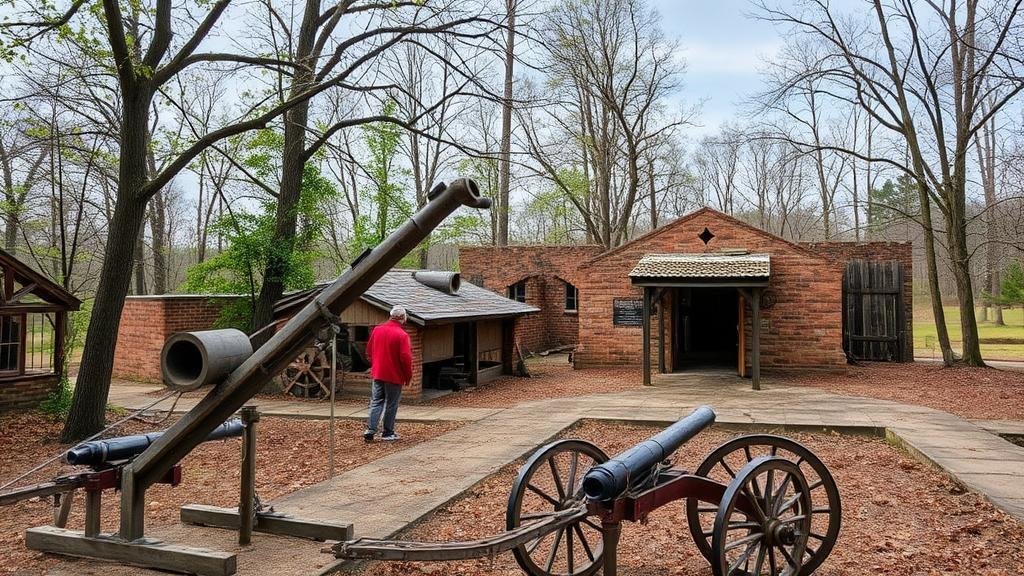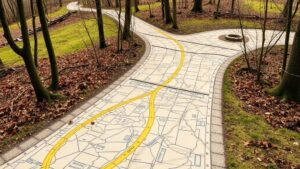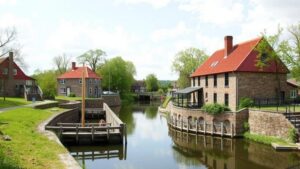Rediscovering Relics in Abandoned Civil War Barracks Foundations
Rediscovering Relics in Abandoned Civil War Barracks Foundations
The Civil War (1861-1865) was a significant chapter in American history, marked by intense battles and socio-political upheaval. Amidst these tumultuous times, barracks served as crucial infrastructure for military personnel. Today, the study of these abandoned Civil War barracks foundations not only sheds light on military logistics but also unveils cultural artifacts that provide insight into the lives of those who lived in tumultuous times. This article aims to explore the archaeological significance of these sites while discussing methodology, findings, and implications of this research.
Historical Context of Civil War Barracks
Founded in 1861, barracks emerged as essential structures in many Union and Confederate camps. These facilities provided accommodation, supplies, and a semblance of comfort amidst the chaos of war. Notable barracks were constructed in areas such as:
- Camp Letterman, Gettysburg, Pennsylvania (1863)
- Fort Sumter, Charleston, South Carolina (1861)
- Camp Chase, Columbus, Ohio (1861)
The architectural style of these barracks ranged from simple wooden structures to more elaborate stone facades, reflecting the resources and needs of the respective armies. Many barracks were intentionally destroyed at the wars end or fell into disrepair, leaving only foundations to mark their significance.
The Archaeological Significance of Barrack Foundations
Archaeological excavations of Civil War barrack foundations often reveal a wealth of information about military life during the conflict. Among the findings are:
- Artifacts such as uniforms, personal items, and cooking utensils
- Architectural remnants indicating the construction techniques of the era
- Evidence of daily life through food waste and garbage pits
These artifacts provide a tangible connection to the past, enabling historians and archaeologists to construct narratives about the soldiers experiences and the broader societal impacts of the war.
Methodology for Excavation
Excavation of barrack foundations typically follows a systematic approach to ensure thorough documentation of the site. Key steps in the methodology include:
- Site Survey: Comprehensive site surveys determine the extent of the foundations and identify areas of potential interest.
- Trowel Excavation: Archaeologists use hand tools to excavate in controlled layers, ensuring proper context is maintained for all artifacts.
- Artifact Analysis: Items recovered are cataloged and analyzed using both historical records and modern techniques, such as radiocarbon dating.
This rigorous approach allows for an accurate assessment of the sites historical value and the stories embedded within its soil.
Case Studies of Rediscovery
Several high-profile rediscovery projects have successfully unearthed significant relics from abandoned Civil War barrack foundations:
- Gettysburg National Military Park (2014): Archaeological teams revealed sections of a barrack used by Union soldiers, uncovering personal items that illustrated the harsh living conditions endured during the campaign.
- Fort McHenry (2018): Excavations near the foundations revealed military gear and personal belongings, showcasing the daily routines of soldiers protecting this strategic location.
These projects exemplify how renewed interest in Civil War archaeology fosters a deeper understanding of Americas historical geography.
Implications for Historical Understanding
Rediscovering these relics assists historians in addressing various societal questions, such as:
- How did the logistics of military barracks affect soldier morale?
- What similarities exist between soldier experiences in different armies?
- How can the artifacts found enhance public understanding of war impacts on communities?
Through the study of these foundations, not only do we gain insights into military strategy but also into the broader social fabric of the nation during this pivotal period.
Conclusion
Rediscovering relics in abandoned Civil War barracks foundations plays a critical role in piecing together the narratives of a conflicted nation. combination of archaeological evidence, historical documentation, and modern analysis creates a comprehensive understanding of the lives of those impacted by the Civil War. Continued research in this area will not only preserve the memory of these individuals but also enrich the contemporary understanding of American history.



